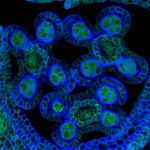(Press-News.org) Anorexia nervosa, bulimia nervosa and binge-eating disorder are the three main eating disorders that 4 out of in 10 individuals living in Western Europe will experience at some point in their lives. In recent years, studies on the genetic basis of anorexia nervosa have highlighted the existence of predisposing genetic markers, which are shared with other psychiatric disorders. By analysing the genome of tens of thousands of British people, a team from the University of Geneva (UNIGE), the University Hospitals of Geneva (HUG), King's College London, the University College London, the University of North Carolina (UNC) and The Icahn School of Medicine at Mount Sinai have built on these initial results by discovering similarities between the genetic bases of these various eating disorders, and those of other psychiatric disorders. Eating disorders differ in their genetic association with anthropometric traits, like weight, waist circumference or body mass index. Thus, genetic predisposition to certain weight traits may be a distinctive feature of anorexia nervosa, bulimia nervosa or binge-eating disorder. The study is published in the International Journal of Eating Disorders.
"Previous studies, which highlighted a genetic association between a high risk of anorexia nervosa and a low risk of obesity, have begun to lift the veil on certain aspects of how eating disorders develop that had been mostly neglected until then", explains Nadia Micali, Professor at the Department of Psychiatry at UNIGE Faculty of Medicine and Head of the Division of child and adolescent psychiatry at the HUG, who directed this work.
She continues, "However, the same work has not been done for the two other major eating disorders: bulimia nervosa and binge-eating disorder. The goal of our study was to understand similiarites and differences amongst all eating disorders in the role of genes governing body weight."
The genome of more than 20,000 people examined
To understand the similarities and differences between the genetic patterns of anorexia nervosa, bulimia nervosa and binge-eating disorder, the research team analysed the genomes of more than 20,000 people. These were taken from two large population-based studies conducted in the UK: the UK Biobank and the Avon Longitudinal Study of Parents and Children.
First author, Dr Christopher Hübel, from King's College London said: "We were able to access volunteer's DNA, their basic health data (weight, age, etc.) and responses to health questionnaires, including possible psychiatric disorders and their eating disorder history. We are grateful for this access as we were able to conduct multifactorial analyses and calculate more than 250 polygenic scores for each person. Each polygenic score sums the risk genes involved in a specific trait, such as depression, for example. We calculated polygenic scores for psychiatric disorders, such as schizophrenia and obsessive-compulsive disorder, and metabolic and physical traits, including insulin sensitivity, obesity and high BMI." Thus, the higher the score, the greater the genetic risk, whether it is blue eyes or the development of a given disease.
The research team then examined the associations between the polygenic scores of these volunteers (representing genetic liability to psychiatric disorders, metabolic and physical traits) and eating disorders.
A combination of psychiatric and body weight regulation genetic risk
The study shows that while there are great genetic similarities between anorexia nervosa, bulimia nervosa and binge-eating disorder, there are also notable differences.
Nadia Micali details these results: "The similarities lie in the association with psychiatric risks: anorexia nervosa, bulimia nervosa and binge-eating disorder share genetic risk with certain psychiatric disorders, in particular for schizophrenia and depression, thus confirming the strong psychiatric component of these diseases. However, the big difference concerns the associated genetics of body weight regulation, which are opposite between anorexia on the one hand, and bulimia nervosa and binge-eating disorder on the other, the latter being linked to a high genetic risk of obesity, and high BMI."
A genetic predisposition to a heavy weight versus a light weight may constitute a determining factor that pushes individuals with similar psychiatric genetic risk to different eating disorders.
"The metabolic and physical component would therefore direct the individual either towards anorexia nervosa or towards bulimia nervosa or binge-eating disorder", analyses Nadia Micali. "Moreover, this study confirms a clear genetic relationship between binge-eating disorder and attention deficit hyperactivity disorder (ADHD), that was already clinically observed, which might be linked to greater impulsivity, which is shared by these disorders."
The role of genetic patterns in body weight regulation identified in this study provides a better understanding of the genetic basis of eating disorders, and of how they differ in their genetic marking despite their similarities. This work could lead to better understand the development of eating disorders.
INFORMATION:
This study was made possible thanks to the funding of the United States National Institute of Mental Health and the National Institute for Health Research (NIHR) Maudsley Biomedical Research Centre (BRC) funding.
Research from the University of Kent has led to the development of the MeshCODE theory, a revolutionary new theory for understanding brain and memory function. This discovery may be the beginning of a new understanding of brain function and in treating brain diseases such as Alzheimer's.
In a paper published by Frontiers in Molecular Neuroscience, Dr Ben Goult from Kent's School of Biosciences describes how his new theory views the brain as an organic supercomputer running a complex binary code with neuronal cells working as a mechanical computer. He explains ...
Gene editing technology will play a vital role in climate-proofing future crops to protect global food supplies, according to scientists at The University of Queensland.
Biotechnologist Dr Karen Massel from UQ's Centre for Crop Science has published a review of gene editing technologies such as CRISPR-Cas9 to safeguard food security in farming systems under stress from extreme and variable climate conditions.
"Farmers have been manipulating the DNA of plants using conventional breeding technologies for millennia, and now with new gene-editing technologies, we can do this with unprecedented safety, precision and speed," Dr Massel said.
"This type of gene editing mimics the way cells repair in nature."
Her review recommended ...
New research from the University of Kent reveals social cohesion with immigration is best ensured through childhood exposure to diversity in local neighbourhoods, leading to acceptance of other groups.
The research, which is published in Oxford Economic Papers, builds on the Nobel Laureate economist Thomas Schelling's Model of Segregation, which showed that a slight preference by individuals and families towards their own groups can eventually result in complete segregation of communities.
Shedding new light on this issue, researchers from Kent's School of Economics have introduced the theory ...
Will we enjoy our work more once routine tasks are automated? - Not necessarily, suggests a recent study
Research conducted at Åbo Akademi University suggests that when routine work tasks are being replaced with intelligent technologies, the result may be that employees no longer experience their work as meaningful.
Advances in new technologies such as artificial intelligence, robotics and digital applications have recently resurrected discussions and speculations about the future of working life. Researchers predict that new technologies will affect, in particular, routine and structured work tasks. According to estimations, 7-35 percent ...
Home Office data shows the number of police officers voluntarily resigning from the force in England and Wales has more than doubled in the last eight years.
Scant attention has been paid to the reason for this mass exodus. Until now. Researchers from the University of Portsmouth studied government statistics, and discovered the numbers of officers voluntarily resigning from the police service is rising - from 1,158 in the year ending March 2012 to 2,363 in the year ending March 2020. The figure amounts to 1.83 per cent of the total police officer population in England and Wales up from 0.86 per cent eight years ago.
Dr Sarah Charman, from the Institute of Criminal Justice Studies at the University of Portsmouth, led the study. ...
New research will enhance corona safety during cruises and help cruise lines to again attract passengers onboard
Researchers within Cell Biology and Industrial Management at Åbo Akademi University have developed models aimed at ensuring corona safety during cruises.
The coronavirus pandemic stopped the cruise industry more or less completely. Major international cruise lines, such as Royal Caribbean Group and Carnival Corporation, largely suspended their cruises during 2020, which resulted in practically zero turnover and losses amounting to billions.
Upon assignment by Business Finland, an interdisciplinary research team has been working to find solutions for managing the current crisis ...
A lot of us recycle our old textiles, but few of us know that they are very difficult to re-use, and often end up in landfills anyway. Now, researchers at Lund University in Sweden have developed a method that converts cotton into sugar, that in turn can be turned into spandex, nylon or ethanol.
WATCH: New method transforms old cotton into glucose
https://www.youtube.com/watch?v=B1V--prLs08
Every year, an estimated 25 million tonnes of cotton textiles are discarded around the world. In total, 100 million tonnes of textiles are thrown out. In Sweden, most of the material goes straight into an incinerator and becomes district heating. In other places, it is even worse, as clothes usually end up in landfills.
"Considering that cotton is a renewable ...
TAMPA, Fla. - Genetic alterations of the KRAS gene are some of the most common mutations in lung cancer patients, but unfortunately these patients have few effective treatment options. Drugs that target the G12C mutation in KRAS have shown some activity in lung cancer; however, alternative signaling pathways are often activated that bypass the KRAS inhibitor, resulting in drug resistance. In a new article published in Clinical Cancer Research, Moffitt Cancer Center researchers show that various subtypes of lung cancer cells activate different signaling pathways in response to KRASG12C inhibitor treatment. These results may help identify potential combination therapy approaches and guide ...
Atmospheric carbon dioxide (CO2) is a major driver of global warming, but this gas could also serve as a valuable resource. Researchers at KAUST have developed an efficient catalyst that uses light energy to convert CO2 and hydrogen into methane (CH4). This counteracts the release of CO2 when methane is burned as a fuel.
Many researchers worldwide are exploring ways to convert CO2 into useful carbon-based chemicals, but their efforts have been limited by low efficiencies that restrict the potential for large-scale application.
"Our approach is based on the synergistic combination of light and heat, known as the photothermal effect," says postdoc Diego Mateo. He explains that the heat is generated by the interaction of light with the catalyst, ...
Spikes in temperature can affect a plant's fertility, resulting in a reduction of yield and economic loss
How plants can protect themselves from stress has been studied by a consortium led by the University of Warwick
Two argonaute-like proteins protect the plant's fertility, understanding these proteins is critical to safeguarding crop production
As Temperatures rise due to global warming the need to protect plants from stressful conditions has increased, as stress can cause a loss in yield and cause further impact economically. A consortium led by the University of Warwick have successfully identified ...

